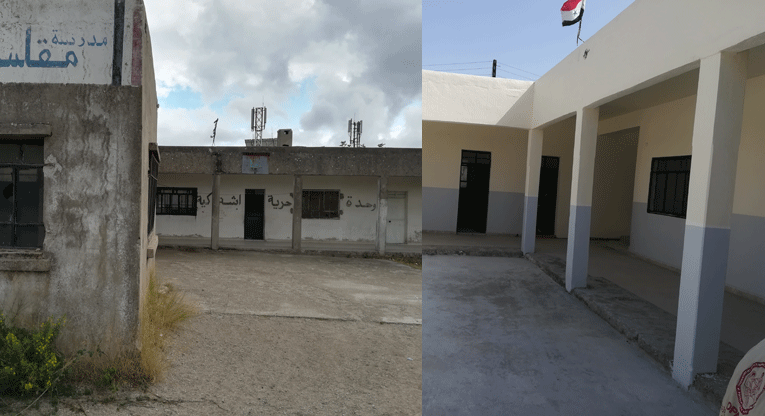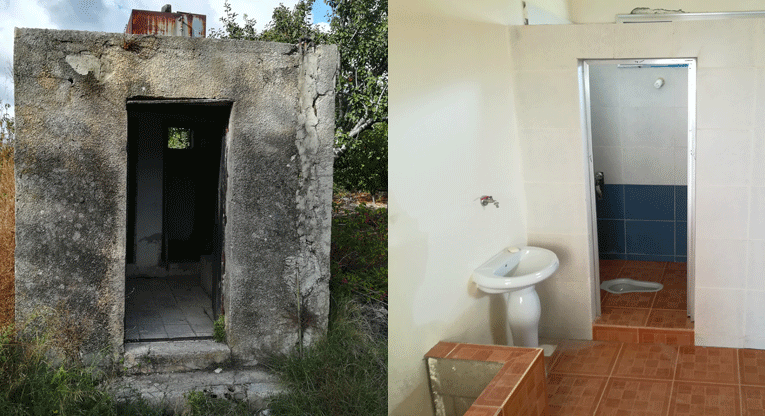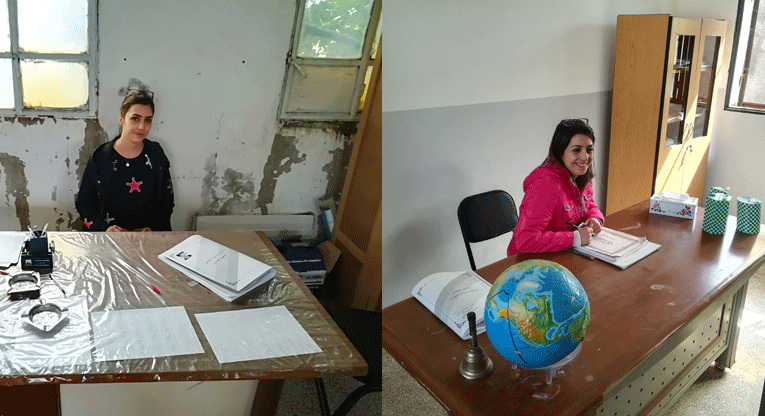Eighth year of war begins in Syria, and the situation for civilians is worse than ever
There are anniversaries for humanitarian workers that are sad reminders of evil in the world. This week marks the seventh year of the Syrian war, and this is no cause for celebration. There is just a cruel war in which all parties have lost a long time ago.
Last week, I was in Syria for a project monitoring trip, and the war was constantly present. The war could even be seen in areas that have not had violent conflicts. In addition to visible fights, 6.1 million internally displaced persons place a burden on the economy of more peaceful areas and on public services.
The war affects the life of every Syrian.
During my trip, I met with colleagues over breakfast in the mornings, and I listened in silence as they talked about the friend or relative in Damascus whose house had been hit by a rocket and whether anyone had been killed or injured. I was shaken by how everyday these stories sounded coming from them and how tired they are after seven years of war.
We were supposed to go to Damascus, but it is impossible at the moment. The fighting in Eastern Ghouta is at its most heated, and dozens of rockets and grenades are fired at the city every day. On my last visit in the fall of 2017, the streets were full of people in the evenings. Single projectiles did not hold people back. Now, in March, people think it best to stay at home.
The Syrian war is a shameful example of the failure of great powers
As humanitarian operators, we do not publicly take sides in politics, but I have to say that seven years of war in Syria is a shameful example of the failure of political will and decision-making on the part of great powers. In the midst of this political tug-of-war, the one to suffer most is always the human being, whichever side of the front line he or she lives.
The victim has been an entire nation, especially children. There is a whole generation of refugees in Syria’s neighbouring countries that has never lived in their native land. At Za’atari refugee camp in Jordan, 80 Syrian children are born as refugees every week. They grow up within the walls of refugee camps and in the poor quarters of a foreign land.
Seven years have left behind unimaginable destruction and human suffering. Hundreds of thousands have died, and in addition to internally displaced people, 5.6 million refugees have fled to neighbouring countries. The real number is much higher, since not everyone has been registered.
There are glimmers of light in Syria, as some get to return to their homes and are able to restart their lives. However, the overall situation for civilians is worse than ever.
69 percent live in extreme poverty. The price of food is eight times higher than before the war. 5.6 million people live in a life-threatening situation, without shelter, protection, and unable to meet fundamental rights or basic needs.
These people are in need of immediate humanitarian aid, and fast, but it cannot be easily delivered everywhere, as is the situation in Eastern Ghouta right now.
Functioning washrooms mean more pupils

Muqlos school in rural Homs in October 2017 (left) and after the rehabilitation in March 2018. Photo: Olli Pitkänen.
Finn Church Aid has supported children’s opportunities for going to school and the restoration of school buildings since 2015. Even though children’s access to school has improved in recent years, 1.7 million school-aged children, or 43 percent, are still out of school.
The need to get children to school is enormous in both Syria and neighbouring countries.
This winter, Finn Church Aid supports the restoration of 12 schools in central Syria. Classrooms, washrooms, and water stations are renovated, walls are painted, and desks are repaired.

Washroom and toilet of Muqlos school in rural Homs area in October 2017 and in march 2018. Photo: Olli Pitkänen.
We visited ten schools, and many children of internally displaced people study in each of them. At the Tartus countryside, principal of Muniat ya Mor school Hamsa Ali says with gratitude that renovating the school meant a lot to the community.
”Before, the toilets did not work and there was no water. Now they are in really good condition. The renovated school facilities have lured the children back to school,” said Ali during my visit.
Joyful colours on the classroom walls have already improved learning results. Absences have dropped, and fewer children and young people than before drop out of school. Teachers’ motivation has improved.
Teaching and learning are appreciated again!
Yusra Naser school in Safita has 361 pupils, 81 of whom the children of internally displaced people. English teacher Lucy Vitar believes there is a bright future ahead for the students.
”They are sad because of the war. Many of them are really bright, and we hope that they learn to love studying,” says Vitar regarding the significance of the renovation work.
Maintaining hope is important everywhere. The desire to believe in a brighter future makes people work for the common good. This could be felt in all the schools.
Principal of Nadim Resla school in Latakia, Fateer Barhom, summed up the effects of the seven years of war in a way I found apt. Although the war has affected everyone, adults need to be able to take responsibility for the children and create the best possible circumstances for them to study in.
Children deserve a chance to build their life in a safe environment.
Olli Pitkänen
Development Manager, Middle East, FCA

The office of principal Noura in Muqlos school in October 2017 and March 2018. The reconstruction of schools gives hope of a brighter future and motivates also the teachers. Photo: Olli Pitkänen.